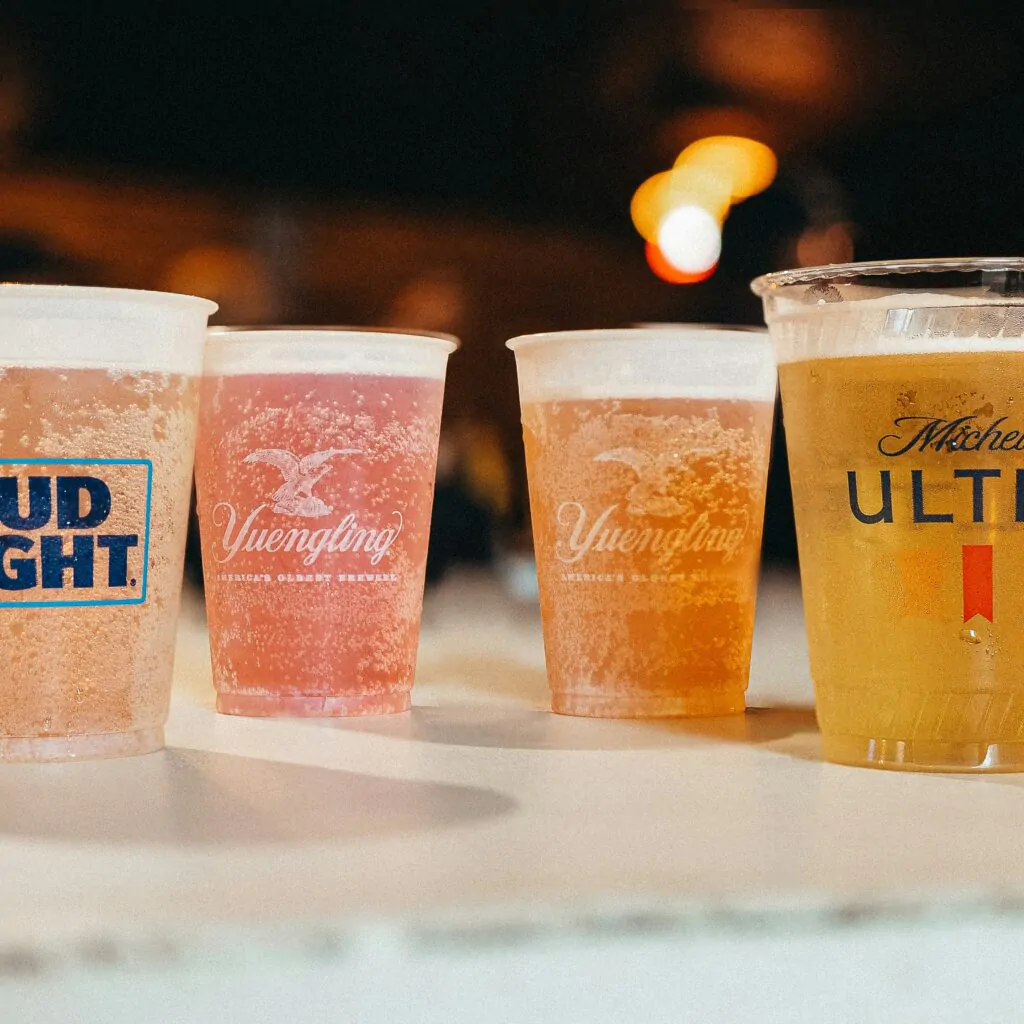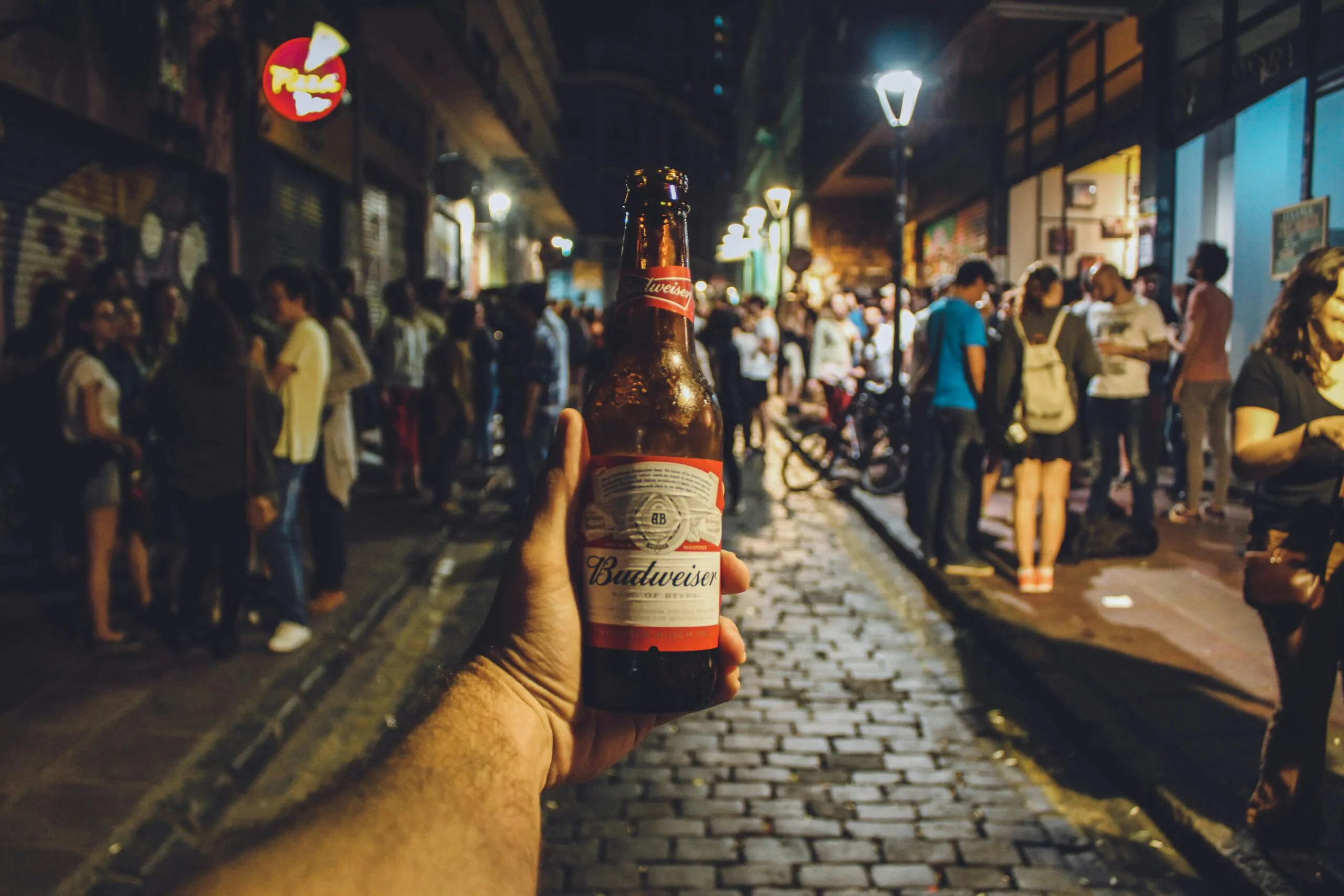Ever heard of Anheuser-Busch InBev (AB InBev)? It is the biggest beer company in the world, it owns brands like Budweiser, Bud Light, Modelo and Corona. It owns more than 500 Brands of Beverages across 100 countries and has generated a revenue of more than 59 Billion US dollars in 2023.
But what is more surprising is that despite being the world’s Largest Brewer (owns about 28% of the Global Beer Market), it is facing a severe crisis.
What? But How Come?
Although Anheuser-Busch InBev has a global presence, AB InBev derives more than 90% of its revenue from the United States and Americans are no longer consuming beer at the rate they used to as the total beer consumption in the US has fallen more than 30% over the last four decades.
So, the ship that AB InBev is a leader of is sinking and how is it planning to get out?
Table of Contents
The Fall of Anheuser-Busch InBev (AB InBev):
Anheuser-Busch InBev owns about 40% of the US beer market and to earn it, AB InBev spent millions, if not billions on advertising.
For decades, commercials of many Anheuser-Busch InBev brands on Super Bowl Sunday were practically a given and these ad-campaigns often featuring humor and top most celebrities made its brands a go-to choice for consumers.
And many of its iconic commercials such as Budweiser Clydesdales pulling a carriage, or the hilarious “Whassup” campaign for Bud Light – have become a commercial phenomena in their own right.
But why is Anheuser-Busch InBev all of a sudden starting to lose the US beer market?
Well there are many reasons for it including changing demographics, health consciousness, and the rising popularity of alternative beverages. Americans recently have been more attracted towards craft beers, that is beer made by small and independent breweries, made in small quantities.
Now, these breweries not only offer unique taste but also are made with high quality grains and therefore are generally more expensive than traditional regular beers as made by the brands of Anheuser-Busch InBev and Americans are willing to pay the extra buck for better quality.
And this is why Craft beer’s share of the U.S. beer market increased from 10.2% in 2012 to 24.6% in 2022.
Furthermore, the rise of spirits and other beverage categories, such as the trendy hard seltzers with their lower alcohol content and kombucha with its perceived health benefits, is expanding consumers options to suit their ever-changing tastes.
So, the shrinking market size and increase in competition from other players is posing a challenge for large scale brewers like Anheuser-Busch InBev.
The Future of Anheuser-Busch InBev (AB InBev):
This isn’t the first time Anheuser-Busch InBev is facing troubling waters, in fact over its 160-year history it has seen a lot of down cycles and the one thing that helped it stay afloat was its aggressive strategy of either acquiring other strong businesses or merging with them.
Mergers and Acquisitions:
InBev was formed in 2004 after the merger of Interbrew (Belgium Company) and AmBev (Brazilian Company) that created the world’s largest Brewer by sales. This deal was valued at 52 Billion Dollars and it paved the way for its future growth.
And if you think 52 Billion Dollars is a lot, wait till you hear about its biggest acquisition till date. InBev in 2016 shocked the world when it acquired SABMiller for a staggering 100 Billion Dollars, a deal which further solidifies its lead as the world’s biggest beer company. SABMiller at the time was one of the largest brewer in the global market with over 200 beer brands and more than 70,000 employees in more than 75 countries.
And now AB Inbev is following a similar strategy, by acquiring other established players as in 2019, it acquired Craft Brew Alliance that has a collection of various craft breweries in the US and owns about 8% of the US craft beer market.
But this strategy of buying your way into the market is now backfiring on Anheuser-Busch InBev, as its debt has ballooned to a staggering 78 Billion Dollars in 2023, which is proving to be unsustainable and this has been noticed by the investors as post-september 2016, after the SABMiller acquisition the stock has been consistently falling and it never really recovered from the 2020 stock market cash.
So, Merger and acquisition going forward is not really a viable option for AB InBev but what other options does it have?
However, AB InBev just isn’t giving up yet, if it can’t grow inorganically (that is through merger and acquisitions) into the market, it is looking at ways to grow organically by launching new products and diversifying into other businesses and categories.
Building Brands from Scratch:
As It did with the launch of Bud Light Seltzer in 2020 and it became very popular, as of 2023 it is the third-best selling hard seltzer brand in the US. This strategy of launching new products under existing brands allows AB InBev to leverage its existing brand recognition and distribution, giving it an edge over competition.
Another thing that AB Inbev is focusing on is its strategy of premiumization. The strategy towards producing more higher priced beers with a focus on quality and brand image and this strategy is already paying dividends.

Best example of this is Michelob Ultra which is a light beer and was created to appeal to people looking for healthy options and as of 2023 accounts for about 14% of the total beer bottle sales in the US and is still growing double digit.
Beyond Beer, Innovation And Diversification:
AB InBev is also looking beyond beer and into the low and non-alcoholic options, recognizing the growing demand for healthier alternatives with a market projected to reach $20.8 billion by 2025 and is heavily investing in research and development to create new beverages that cater to the changing consumer tastes.
Going Global:
While Budweiser and Bud light are facing Severe competition in the US Market this isn’t the case internationally, where they hold a dominant position and their sales volume actually grew by 5.2% in 2022 in key emerging markets.
In these emerging markets these brands (Budweiser and Bud Light) are considered as aspirational and therefore are able to charge a premium and with the rising middle class these developing countries can be a gamechanger for AB InBev in the next couple of years.
Cutting Back on Advertisements:
Anheuser-Busch InBev has now decided to cut back on high-profile advertising platforms which has cost the company an average of 20 million dollars per ad and is now focusing more on Social media marketing, influencer partnerships, and content creation tailored to target specific demographics and the next generation.
So, will Anheuser-Busch InBev be able to diversify beyond beer in the US and cater to a new generation of drinkers with diverse and ever-changing tastes? And Will it be able to replicate its success in the beer market in the developing countries? And all while repaying its debt. This only time will tell but one thing is for sure AB InBev isn’t new to this and this is not the first time it has been in troubled waters.
Also Read: How Singapore Solved its Housing Crisis? (Explained)
